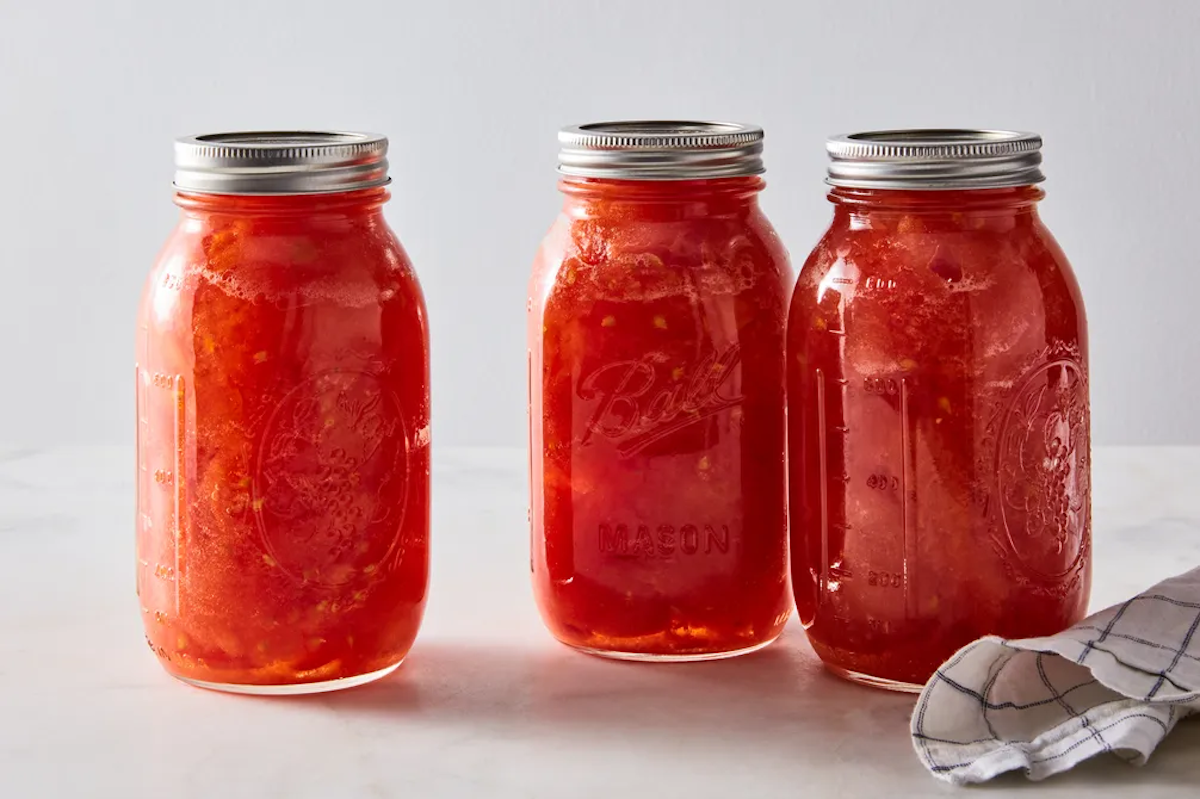We’ve officially reached the point in summer when my garden is producing way more vegetables than we could possibly eat. I’m talking 3 or 4 pounds of cucumbers per day! Because I hate to see anything go to waste, I started learning how to preserve produce a few years ago, and now, canning is one of my favorite summertime activities. On any given weekend, you can find me pickling cucumbers, zucchini, and beets or making jam from homegrown rhubarb and peaches.
I’ll be the first to admit that canning can be a bit intimidating, as you have to follow recipes precisely and properly sterilize your equipment to ensure the food is safe to eat down the road. There’s a lot of different information online about how to sterilize canning jars, so we turned to the experts at Ball for definitive answers on how it should be done and when it’s necessary. Here’s what they told us.
Do all canning jars need to be sterilized?
If you’re wondering whether you need to sterilize jars before filling them up with delicious preserves, the answer lies in the recipe’s processing time. “Jar sterilization is not required prior to canning unless the recipe being used has a processing time less than 10 minutes,” explains Stephen Galucki, Manager of R&D Fresh Preserving at Newell Brands. “In recipes where the processing time is 10 minutes or longer, sterilization is achieved during the food processing step.” Additionally, you don’t ever need to pre-sterilize jars if you’re pressure canning.
However, if you’re water-bath canning and the recipe will be processed for less than 10 minutes, you’ll need to sterilize your jars before filling. Even if your recipe processes for more than 10 minutes, you can still sterilize the jars if you want — it can’t hurt! I tend to sterilize mine just to be safe.
How to sterilize canning jars
While you may find “hacks” online that tell you to sterilize jars in the dishwasher or microwave, there’s only one USDA-approved method for sterilizing jars. “The only way to sterilize jars is by boiling them in water for a minimum of 10 minutes at an altitude of 0 to 1,000 feet, with additional time added at higher elevations,” says Galucki.
1. Gather your equipment
To sterilize glass canning jars, you’ll need a boiling water canner or a stockpot with a rack — the pot needs to be at least 2 inches taller than the jars you’re processing. A jar lifter will also come in handy, but a pair of kitchen tongs will work, too.
2. Set up your pot
Place the rack inside the canning pot and arrange your jars on top of it, facing right side up. It’s important to use a rack, otherwise the bubbles that form when the water boils will cause the jars to bounce around and bang into each other, which can lead to cracks.
3. Cover the jars with water
Next, fill the pot with hot water. It’s often easiest to pour water into the jars first, then the surrounding area — otherwise, they’ll float up. You’ll want to fill the pot until the water is at least 1 inch over the top of the jars.
4. Process for 10 minutes
Place your pot on the stove and turn the burner on high. Bring the water to a roiling boil and process the jars for 10 minutes to sterilize them at altitudes up to 1,000 feet. If you live at a higher altitude, you’ll need to add one additional minute for each additional 1,000 feet of elevation.
5. Fill your jars
After 10 minutes is up, your jars are sterilized — easy, right? From here, you can remove them from the water using the jar lifter, carefully dump out any water, and fill them with your processed foods. Be careful handling the jars, as they’ll be quite hot!
If you’re not quite ready to fill the jars yet, you can simply turn off the heat and leave them in the water until it’s time to fill.
Wait, what about the lids?
Canning lids, on the other hand, should not be sterilized in boiling water. The high heat can actually harm the sealing ring on the underside of the lid, causing it not to seal properly during processing.
“Ball lids do not need to be sterilized outside of the processing time or pre-warmed prior to use,” explains Galucki. Instead, you can simply wash the lids with warm, soapy water before putting them onto the jars.
This post contains products independently chosen (and loved) by Food52 editors and writers. Food52 earns an affiliate commission on qualifying purchases of the products we link to.


